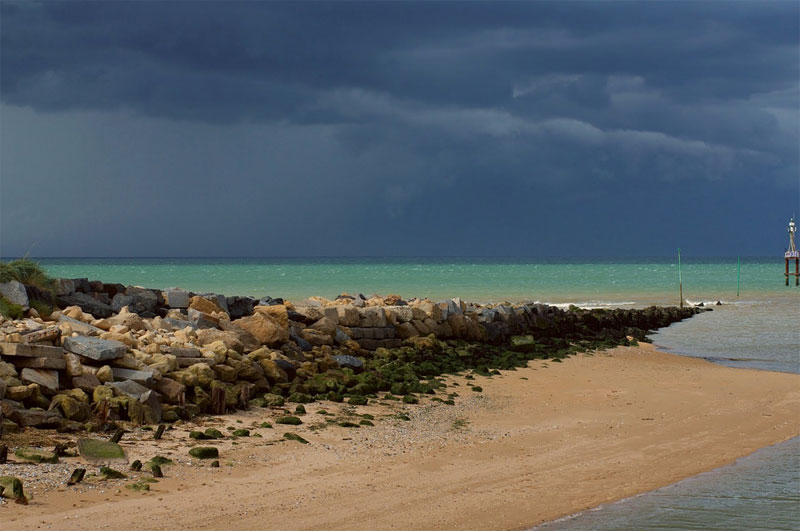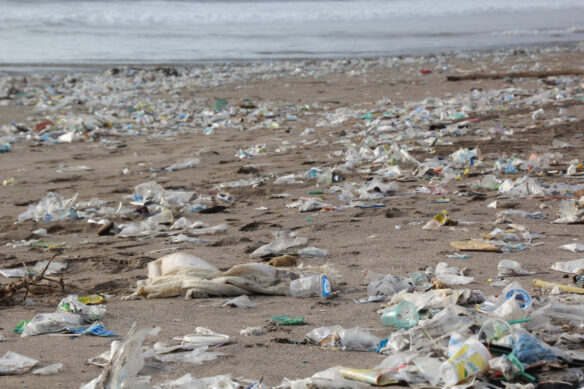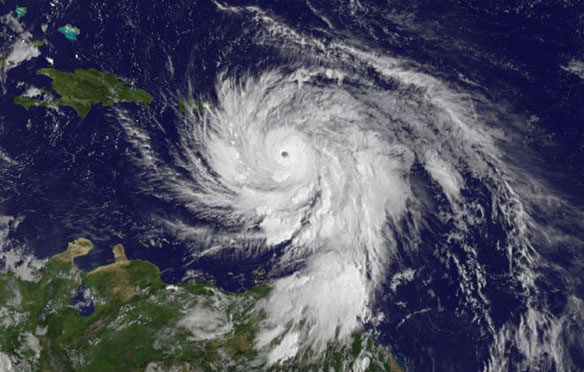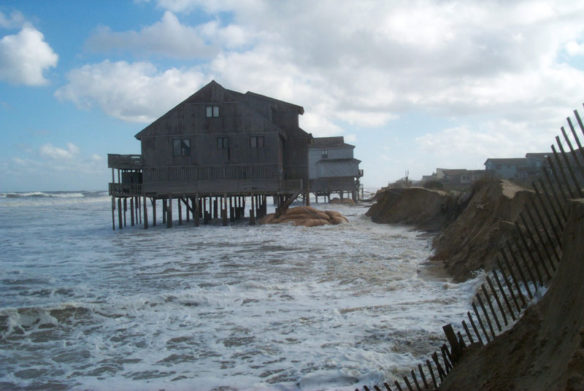
Seawall, Courseulles-sur-mer, Basse Normandie. Photo source: ©© Olivier Engel
Un plan de 500 millions d’euros pour consolider les digues en France.
By Bertrand d’Armagnac, Le Monde.
Quatre mois et demi après la catastrophe provoquée par la tempête Xynthia en Vendée et en Charente-Maritime, le Gouvernement a annoncé ce mardi 13 juillet, la mise en place d’un “plan digues” destiné à mieux répondre aux risques de crues et d’inondations en France.
Présenté ce mardi en Conseil des ministres par le ministre du Développement durable, Jean-Louis Borloo, ce plan prévoit le renforcement de 1200 kilomètres de digues fluviales et maritimes.
Sur la période 2011-2016, l’Etat souhaite mobiliser environ 500 millions d’euros afin d’aider au confortement de 1 200 km de digues sur un parc de près de 9 000 km. Le plan, dont la mise en place est prévue dès 2010, fera l’objet, dans les mois à venir, d’une concertation visant à l’enrichir et à le préciser. Il reprend notamment des pistes lancées lors des auditions devant le Parlement, sur les causes de la tempête Xynthia.
…
Read Original Article, Le Monde
A plan of 500 million euros to strengthen the levees in France.
Google English Translation
Four and a half months after the disaster caused by storm Xynthia in the Vendée and Charente-Maritime, the French Government presented Tuesday, July 13, in Council of Ministers, proposals for the development of a “Plan Digues” intended to better respond to flood risk and flooding in France.
Over the period 2011-2016, the State wants to raise about 500 million euros to aid in reinforcement of 1,200 km of sea walls and levees, on a fleet of nearly 9000 km. The plan, whose implementation is planned from 2010, will be in the coming months, an action designed to enrich and to clarify that. It includes such tracks launched at the hearings before the Parliament on the causes of the storm Xynthia.
“The state of protection works, overall concern and the lack of a suitable project management, pose real problems today,” said French Minister of Ecology, Francois Borloo. The system devised by the Department of Ecology take into consideration sea walls and levees along coastlines and rivers, as well as the natural lines of defense such as dunes, lagoons and swamps.
It encompasses not only the upgrading of the park dykes and restructuring of its management, but also reducing the vulnerability of areas at risk and better use of weather forecasting and warnings.
The plan to establish by 2011 a list of high-risk flood areas, identified as priorities, which will trigger the diagnosis and the securing of levees and natural systems involved. However, certain protective structures require urgent action and therefore the initiation of work before the spring tides in August and September. This is the case of dams damaged by the storm Xynthia who are already the subject of work launched in March, which should lead to a consolidation before reliable high tides.
For other works, the identification process is being completed in respect of river levees, and will be completed by the end of 2010. The diagnostic techniques for detecting the most dangerous structures will be established by end-2010 for all works damaged by Xynthia and before the end of 2011 for the entire coastline. This diagnostic work will be done on the sea walls and levees between late 2010 and late 2011.
The organization of project management is another issue to be addressed urgently. In France, almost one third of the sea walls has no known owner or is in the hands of local residents or municipalities with insufficient means.
Devices are to be found in order to ensure that sea walls’ maintenance and repairs are completed specifically when faced with owners with reduced technical and financial capabilities, or if they are unknown. A working group of State and local Governments Representatives, is to make proposals on this topic by the end of 2010, including a better definition of the legal framework for community response.
Another element of the Plan: the urbanization of areas at high risk. A greater control of these areas, including the ban on further construction in low-lying areas, is now recommended by the Ecology Minister. In order to manage urbanization, plans to prevent natural hazards (NRPP) will be completed or be reviewed within a maximum period of three years.









